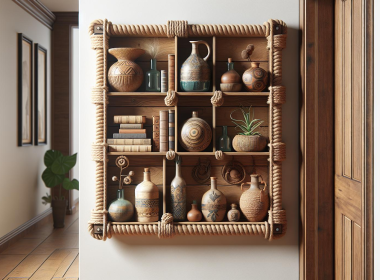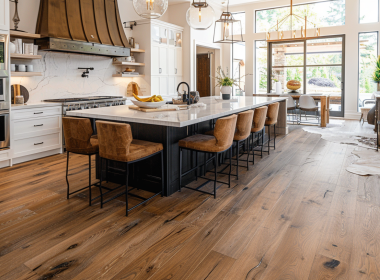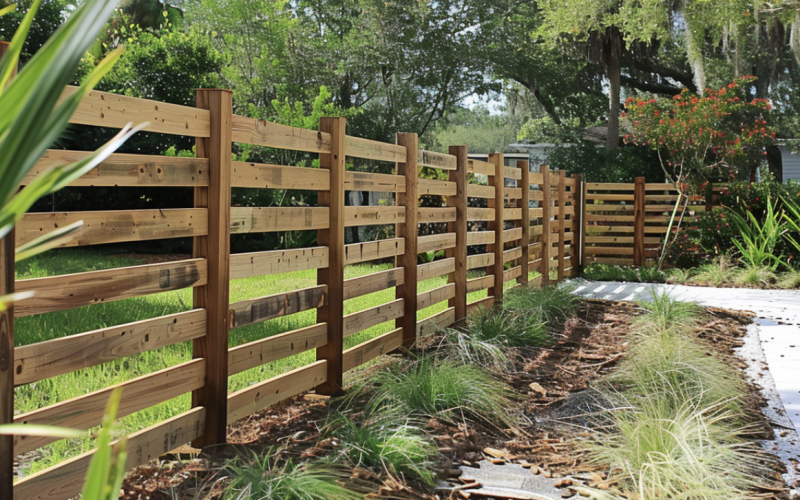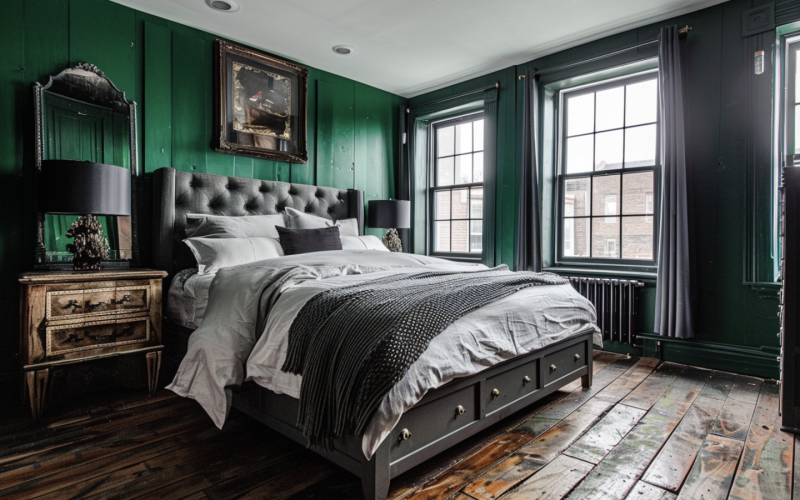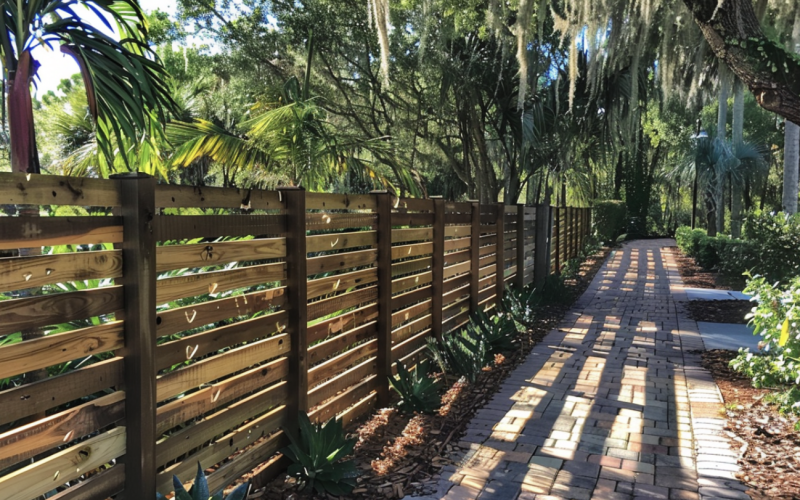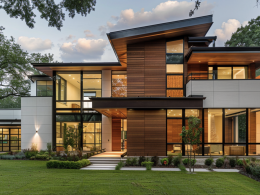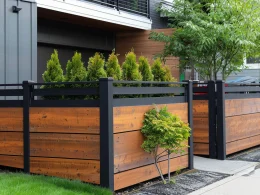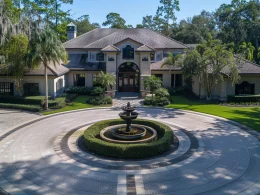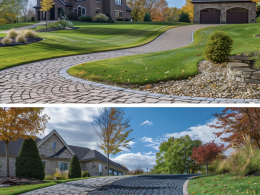Many homeowners wonder if pallet wood is viable when building a fence on a budget. After all, pallets are often readily available and inexpensive.
However, before you start collecting pallets for your DIY fence project, it’s essential to consider whether they’re genuinely suitable for the task at hand.
In this article, we’ll explore the pros and cons of using pallet wood for fencing and provide alternatives to a pallet fence to inspire your project.
By the end of this post, you’ll understand whether pallet wood is the right choice for your fencing needs and how to make the most of this unconventional material.
Benefits of Using Pallet Wood for Fences
Pallet wood has gained popularity as a fencing material due to its numerous benefits. This section will explore the key advantages of using pallet wood for your fence.
Cost-Effectiveness
Using pallet wood for your fence can lead to significant cost savings compared to traditional materials like new lumber, metal, or vinyl.
Pallets are often inexpensive or free from local businesses, making them an economical choice for budget-conscious homeowners.
To put the cost savings into perspective, a pallet wood fence can cost as little as $2 to $4 per linear foot, while a traditional wood fence ranges from $7 to $15 per linear foot.
This means a 100-foot pallet wood fence could save you anywhere from $500 to $1,100 compared to a conventional wood fence.
The availability of pallets in your area, the potential need for treatments to ensure longevity, and the choice between DIY installation or hiring professionals can all impact the final cost.
Environmental Impact
By repurposing existing materials, you minimize the demand for new lumber, which helps preserve forests and reduces the environmental impact of logging and transportation.
Repurposing pallets for fencing aligns with sustainable building practices and reduces the amount of waste sent to landfills.
Customization and Aesthetics
Pallet wood offers a high degree of flexibility in fence design. You can easily adapt pallets to create fences of various heights and styles, from low garden borders to tall privacy fences.
The rustic, weathered appearance of reclaimed wood lends itself well to creating a charming, farmhouse-style fence.
Alternatively, sand and stain the wood for a more modern look. Pallet wood’s natural variations in color and texture can add character and visual interest to your outdoor space.
Building a pallet wood fence is an excellent opportunity for DIY enthusiasts to showcase their skills and creativity.
Pallet Wood for Fences: Challenges and Considerations
While pallet wood offers several benefits for fencing projects, it’s crucial to understand the potential challenges and considerations before starting.
In this section, we’ll discuss the factors that can impact the success and longevity of your pallet wood fence.
Wood Quality

Some pallets may be made from hardwoods like oak or maple, while others are constructed from softer woods like pine.
The wood’s quality directly influences its durability and resistance to wear and tear.
Lifespan in Outdoor Conditions
Exposure to moisture, extreme temperature changes, and pests can lead to warping, cracking, or rotting over time.
Pallet wood may not withstand the elements, and pressure-treated lumber or naturally decay-resistant woods like cedar or redwood may not.
Routine Maintenance
Routine tasks may include cleaning the fence to remove dirt, debris, or mildew and reapplying protective finishes as needed.
The frequency of maintenance will depend on the specific materials used and the local climate conditions.
Long-Term Care
Regularly inspect the fence for signs of damage, such as loose boards, cracks, or rot. Address any issues promptly to prevent further deterioration.
Consider replacing severely damaged sections or individual boards as necessary.
Cost vs. Benefit
Pallet wood’s lower durability than other fencing materials may result in more frequent repairs or replacements, which can add up in the long run.
Weighing the upfront savings against the potential long-term expenses will help you make an informed decision.
Wood Treatment and Chemicals
One of the primary concerns when using pallet wood for fencing is the potential presence of harmful chemicals.
Some pallets may have been treated with chemicals like methyl bromide for fumigation or pressure-treated with preservatives containing chromated copper arsenate (CCA).
These chemicals can pose health risks if the wood is not handled properly.
Alternatives For Pallet Wood Fences
When considering a fencing solution for your property, it’s important to explore various options to ensure you make the best choice based on your budget, desired aesthetics, and functional requirements.
1. Chain-Link Fences
Chain-link fences are generally cheaper than traditional wood fences, making them budget-friendly.
These fences have a long lifespan and require minimal maintenance, as they resist rust and corrosion.
Chain-link fences offer little privacy compared to solid wood or pallet fences, which may concern some homeowners.
2. Traditional Wood Fences
Traditional wood fences provide a classic, warm appearance that complements most residential properties.
Wood fences can be easily painted or stained to match the aesthetics of your home and landscaping.
Traditional wood fences can be more expensive than chain-link fences and potentially higher than pallet wood fences, depending on the type of wood used.
Wood fences require regular maintenance, such as staining, painting, and repairs, to resist weather damage and decay over time.
3. Vinyl Fences
Vinyl fences are very low maintenance, as they do not require painting or staining, making them a convenient option for busy homeowners.
Unlike wood, vinyl does not rot or decay, ensuring long-lasting performance.
The upfront cost of vinyl fences is generally higher than that of wood or chain-link fences, which may deter budget-conscious homeowners.
Due to the production process and disposal issues, vinyl fences are less environmentally friendly than other options.
4. Bamboo Fences
Bamboo is a highly sustainable and eco-friendly material, growing quickly and requiring minimal cultivating resources.
Bamboo fences may require more maintenance in damp climates to prevent rot and decay, affecting their longevity.
Wrapping It Up
Building a pallet wood fence is an attractive and cost-effective solution for homeowners looking to create a unique, eco-friendly boundary around their property.
Understanding this DIY project’s benefits, challenges, and practical steps can help you decide whether a pallet fence is right for you.
While pallet wood fences offer affordability, customization, and sustainability, it’s essential to consider factors such as durability, maintenance, and safety before embarking on your fencing journey.
By weighing the pros and cons and exploring alternative solutions, you can choose the best fencing option that aligns with your budget, aesthetic preferences, and functional needs.
So, are you ready to transform your outdoor space with a rustic and charming pallet wood fence? The choice is yours—start planning your project today!

